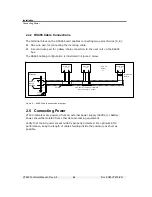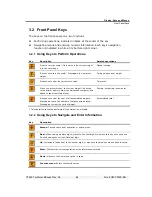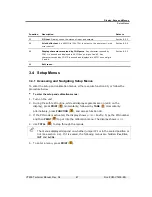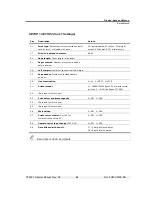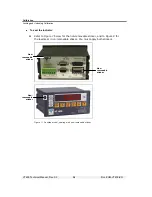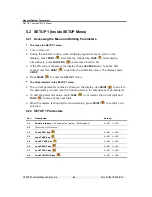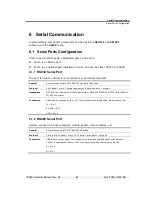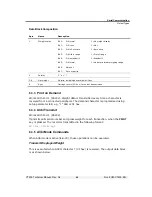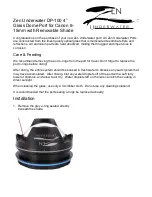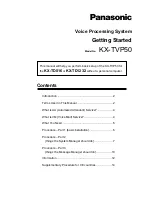
Calibration
Calibration with Standard Weights (S-CAL)
VT400 Technical Manual, Rev. A5
33
Doc
#
UM-VT400-EN
4 Calibration
Before you can calibrate the scale, you must ensure that jumper JP1 is not in the
sealed position (see section
4.4). There are two ways to calibrate the VT400:
Standard weights calibration, in which you record the center of zero, and then
place a known weight on the scale and enter its weight (see section
4.1).
Electronic calibration, in which you enter the mV value of the minimum and
maximum weight (see section
4.2).
Both of the above are performed using the
CAL
setup menu.
After calibrating the scale, you should store calibration data in persistent memory
(see section
4.3), and seal the calibration lock (see section
4.4).
To calibrate the unit:
1. Power up the VT400.
2. Allow a minimum of 10 minutes for warm-up.
3. Proceed with calibration as described in the following pages.
4. Store the calibration data (see section
4.3).
5. Seal the unit (see section
4.4).
4.1 Calibration with Standard Weights (S-CAL)
Calibration with standard weights is done in two stages:
Zero calibration, in which you take a weight measurement when there is nothing
on the scale (see section
4.1.1). This is also called dead-load adjustment.
Span calibration, in which you place a known weight on the scale, and manually
enter its correct weight (see section
4.1.2).
You must perform both of the above for the scale to be calibrated properly.
After calibrating the scale, you must save the values in permanent memories by
entering the setup menus and selecting the
STORE
option (see section
4.3). It
is also advised to lock calibration (see section
4.4).
4.1.1
Zero (Dead-Load) Calibration
To perform zero calibration:
1. Enter the setup menus and use
TOTAL
(
) to scroll to the
CAL
menu. Press
( )
to enter the menu.
2. Press
( ) to enter the
S-CAL
menu.


